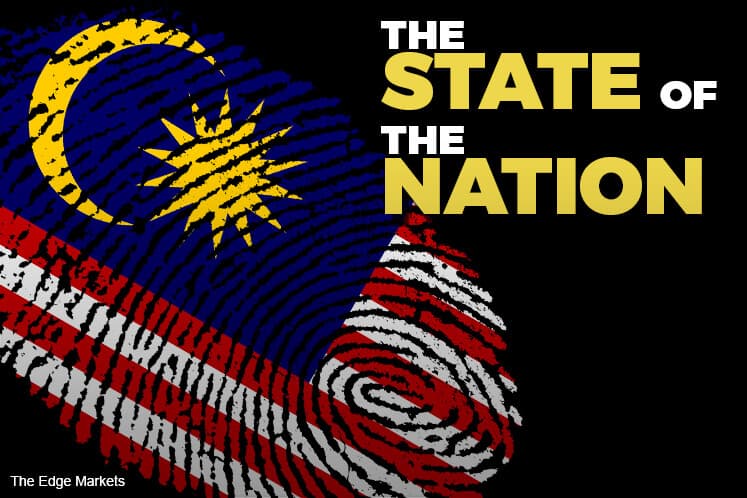
This article first appeared in The Edge Malaysia Weekly on March 26, 2018 - April 1, 2018
ANYONE who has been paying attention would not be asking whether the government can stick to its budget. Rather than asking when the government last spent less than what it had earned, the more constructive question would be, “What measures can be put in place so that the federal government would not be tabling a supplementary budget every year?”
To do that, we will first attempt to understand where the money asked for in the supplementary budget goes to.
The government has tabled supplementary budgets in Parliament every year for some time now. If it is any consolation, the frequency has reduced from two times a year (between 2010 and 2015) to once a year (2016 and 2017). Finance Minister II Datuk Seri Johari Abdul Ghani told reporters on March 22 that the government had in the past tabled the supplementary budgets “up to four times in a year” and that the reduced frequency meant that the government “has become more efficient in budgeting”.
The latest supplementary budget was tabled in Parliament last Monday. Of the RM8.83 billion asked for — for spending done last year — RM7.79 billion is for operating expenditure and RM1.05 billion for development expenditure.
From the Supplementary Supply (2017) Bill 2018, we know that RM7.12 billion went mostly to various ministries — Education (RM891.1 million), Home Affairs (RM804.27 million), Agriculture and Agro-based Industry (RM685.49 million), Health (RM479.07 million), Higher Education (RM425.41 million), Women, Family and Community Development (RM235.08 million), Foreign Affairs (RM155.46 million), Domestic Trade, Co-operatives and Consumerism (RM150 million), Communications and Multimedia (RM24.3 million) and Human Resources (RM16 million) — as well as to the Public Service Department (RM295.74 million), Election Commission (RM82.07 million), Malaysian Anti-Corruption Commission (RM35 million), Prime Minister’s Department (RM23.02 million) and Parliament (RM10 million).
The largest sum sought — RM2.71 billion — was for contribution to statutory funds.
According to the Ministry of Finance’s 2018 Federal Government Expenditure Report, the 2017 comparison figure shows RM1.93 billion was the estimated operating expenditure allocation for 14 statutory funds, which come under the purview of the Treasury Secretary General (Ketua Setiausaha Perbendaharaan).
The RM1.93 billion estimated allocation for 2017 included RM650 million for the State Reserve Fund (Kumpulan Wang Rizab Negeri or KWRN) and RM500 million for the Retirement Fund Incorporated (Kumpulan Wang Persaraan or KWAP).
We were not able to locate the English names of the other statutory bodies at the time of writing but a number of them look like aid-related bodies (see table).
The immediate question here is not what these statutory funds are and what they do, but the fact that the RM1.93 billion historical figure given for 2017 in the report for 2018 estimates is not the actual spending for 2017.
We know RM1.93 billion is not the actual figure for 2017 because an additional RM2.71 billion has just been asked for statutory funds’ 2017 spending in the Supplementary Supply (2017) Bill 2018 tabled last Monday. That brings the total contribution to statutory funds for 2017 to RM4.64 billion — a 141% increase from the original estimate of RM1.93 billion.
Similarly, we know that the RM1.88 billion allocation for the various statutory funds in 2016 (as shown in the 2016 and 2017 Federal Government Expenditure Report) is not the actual figure for 2016 because Supplementary Supply (2016) Act 2017, which was tabled last year, had asked for RM2.25 billion for contribution to statutory funds.
That would bring the total contribution to statutory funds for 2016 to RM4.13 billion, an increase of 119% from the RM1.88 billion stated in the 2016 and 2017 Federal Government Expenditure Report.
Our checks show that there has been a similar trend since at least 2010. By adding the figures asked for in the supplementary budgets to the original estimates, the actual contribution to statutory funds were closer to RM4.39 billion for 2015 (official estimate: RM2.05 billion), RM4.16 billion for 2014 (official estimate: RM2.92 billion), RM5.01 billion for 2013 (official estimate: RM2.91 billion), RM5.86 billion for 2012 (official estimate: RM3.49 billion), RM7.07 billion for 2011 (official estimate: RM4.25 billion) and RM12.01 billion for 2010 (official estimate: RM3.98 billion).
Based purely on the example of contributions to statutory funds, it would seem that the supplementary budgets have obsoleted some of the government spending figures disclosed in the Federal Government Expenditure Reports.
At the time of writing, officials from the Ministry of Finance had yet to revert on questions sent by The Edge, specifically whether there is another detailed federal government report in which expenditure numbers include the actual spending for a particular year, which would reflect the amount asked for in the supplementary budget.
There should be better book-keeping practices.
Historical numbers, which are provided to economists and data analysts, would only be meaningful if actual figures are provided as soon as is practicable.
From the economic reports released annually by the Ministry of Finance, we know, for instance, that the first figures provided for government revenue and expenditure are the budget estimates, which are updated the following year with revised estimates, with the actual figures provided the year after. Put another way, the actual revenue and spending for 2016 would be made known when 2018 budget estimates are released.
The same can be done by adding a third and fourth column to the 2019 Federal Government Expenditure Report (to be released later this year) to include the actual spending data for 2016 and 2017 on top of the current practice of providing only the estimates for 2018 and 2019. This would win more points for the government, which — together with the Statistics Department, Bank Negara Malaysia and Khazanah Nasional Bhd — has been encouraging more use of data for public policy analysis.
Save by subscribing to us for your print and/or digital copy.
P/S: The Edge is also available on Apple's AppStore and Androids' Google Play.